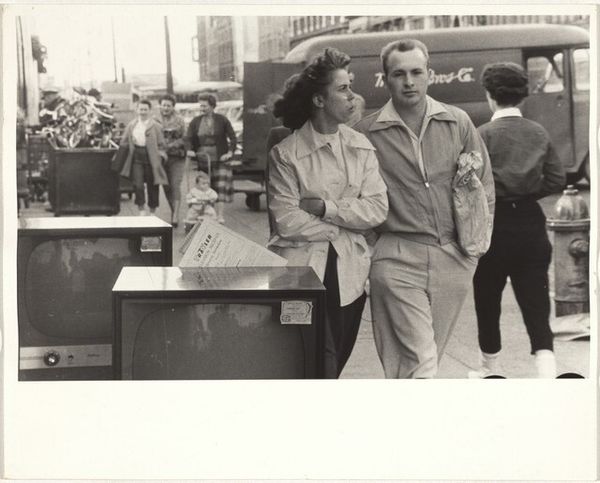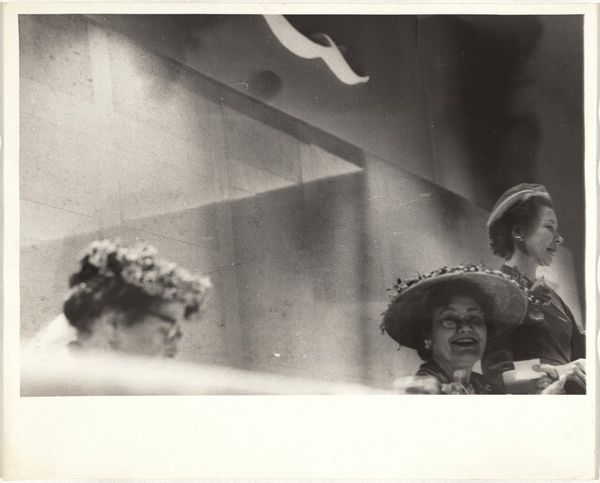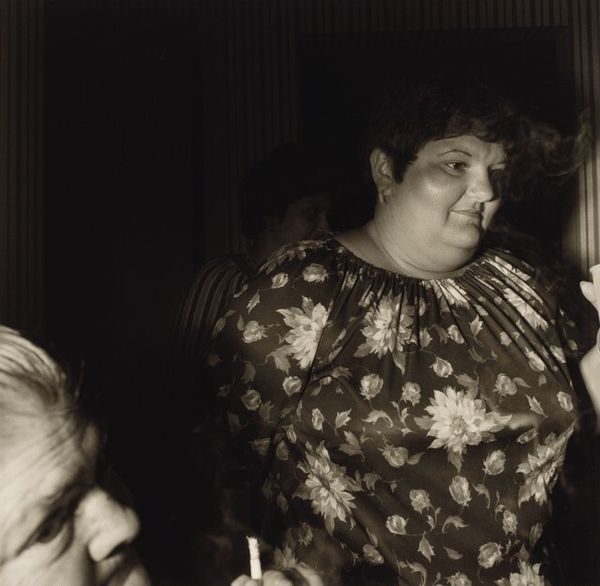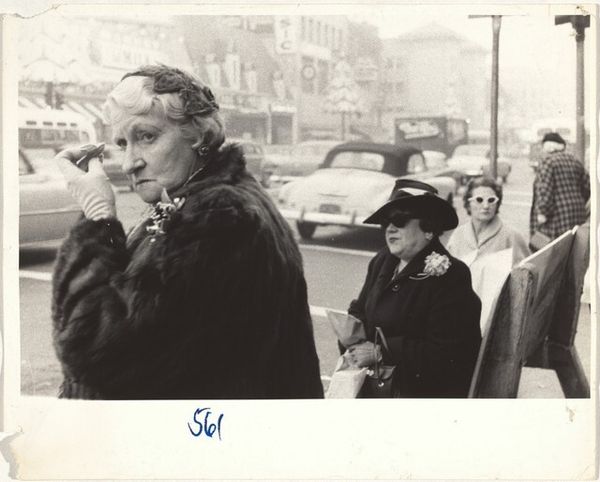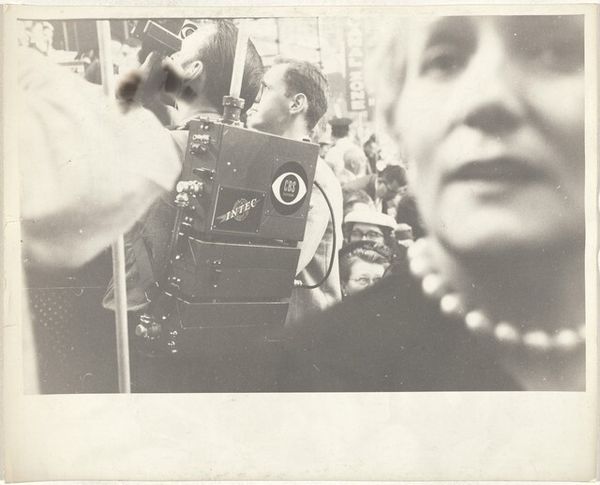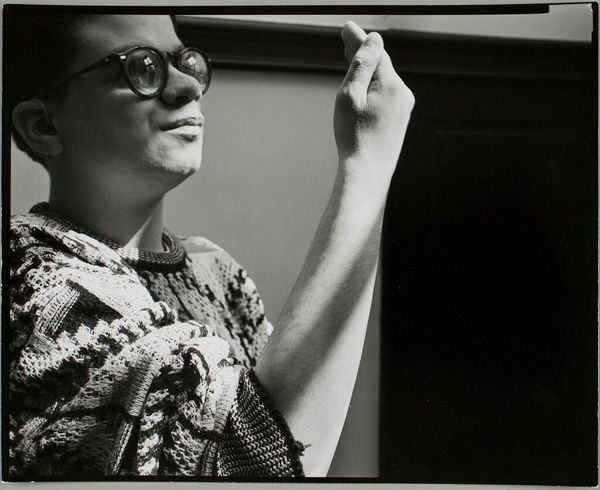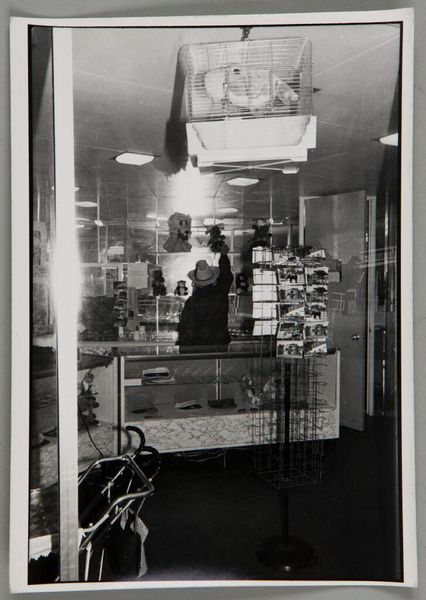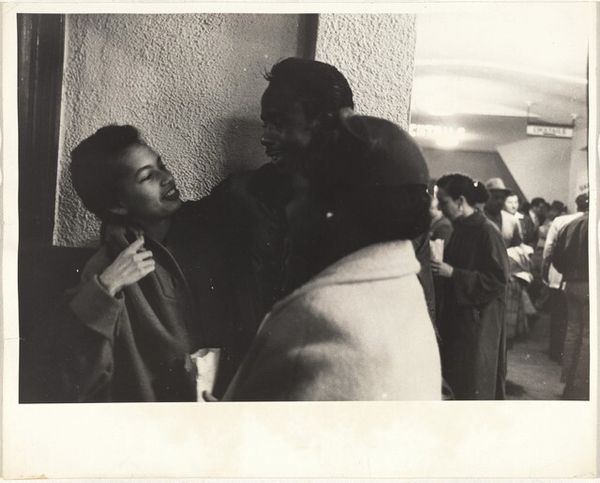
At some time during the afternoon Lena might be seen looking at the silverware at Lawner's Auctioneers, next to Benny's. 1951
0:00
0:00
Dimensions: sheet (trimmed to image): 24.7 x 34.3 cm (9 3/4 x 13 1/2 in.)
Copyright: National Gallery of Art: CC0 1.0
Curator: Let’s turn our attention to this intriguing black and white photograph. Robert Frank created “At some time during the afternoon Lena might be seen looking at the silverware at Lawner's Auctioneers, next to Benny's” in 1951. It’s a snapshot of urban life. Editor: It's immediately evocative, a quiet moment caught in the city's hustle. The woman seems lost in thought, a subtle contrast to the bustling auctioneers shop surrounding her. There's a sense of detachment, or perhaps longing. Curator: Precisely. Consider the means of production: Frank used a 35mm Leica, allowing him to be quick and unobtrusive. He’s capturing not posed studio shots, but authentic moments of the working class interacting with objects, remnants of others’ lives offered for sale, or, really, reuse. Editor: The silverware acts as a powerful symbol of aspiration and social mobility, reflecting desires for the American Dream just out of reach for the everyperson. She's literally looking up at these objects. Are they mere commodities or potent carriers of value beyond the financial? What do they mean for the average worker? Curator: Well, her practical uniform, with the sensible trim, speaks to a certain lived reality— a direct contrast with the implied gentility of the silverware on display. I’m intrigued by this implicit negotiation of class and taste happening right here. The context matters so much. Editor: I agree. It highlights the inherent human fascination with beautiful or precious objects as signifiers, status markers—almost totems. What desires or past meanings might that silverware hold for her, or remind her of? Is she seeing just cutlery, or something else entirely? The man behind is equally suggestive... Curator: Good point. He's well dressed, so more upscale. Maybe he’s about to participate in this consumer cycle, while she may merely be observing it, highlighting divisions of labor, access and influence inherent in the mid-century economy. Editor: Overall, I sense a larger theme of mirroring—between the observer and the observed, past and present, desire and reality. Frank’s seemingly candid style invites our contemplation on the complexities beneath surface appearances. Curator: Definitely. For me, it’s this raw snapshot quality, using humble technology, that allows Frank to subtly expose these fundamental relationships within society, then and now. Editor: I’m left pondering on the lasting resonance of simple objects—how they become vessels for our cultural dreams, anxieties, and even unspoken stories that transcend mere function or monetary value.
Comments
No comments
Be the first to comment and join the conversation on the ultimate creative platform.


